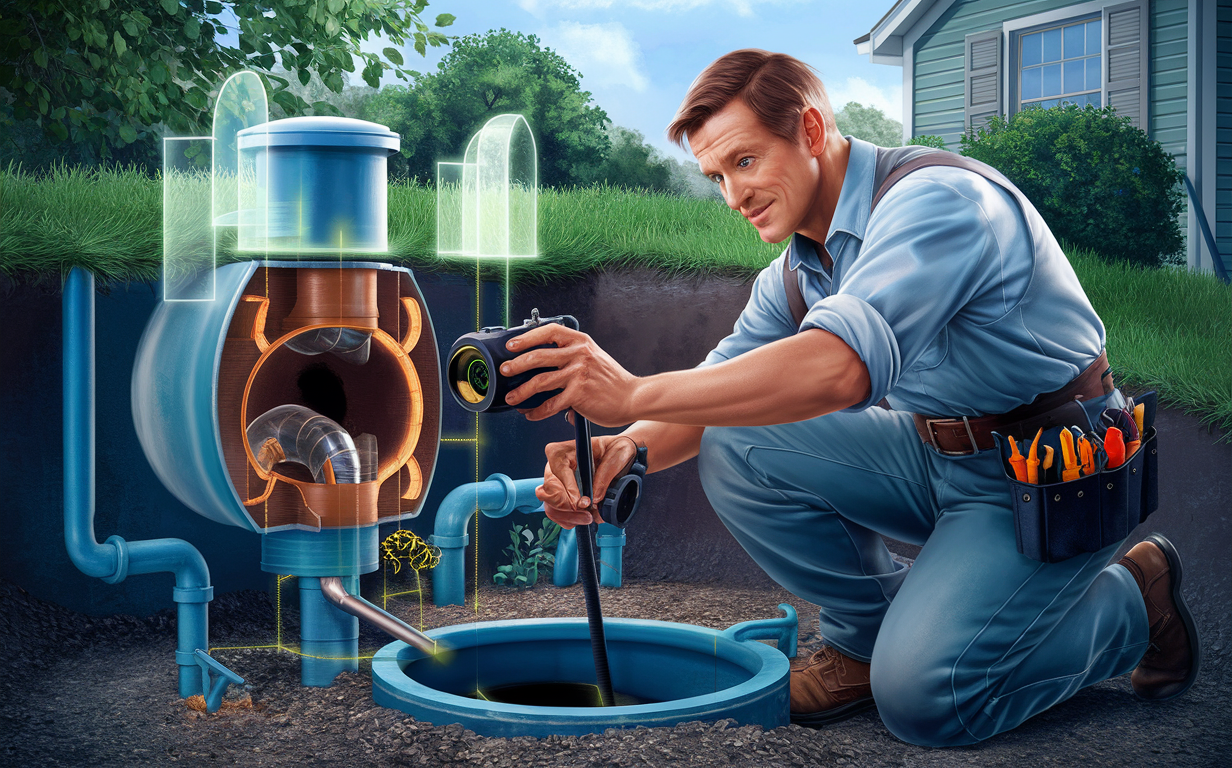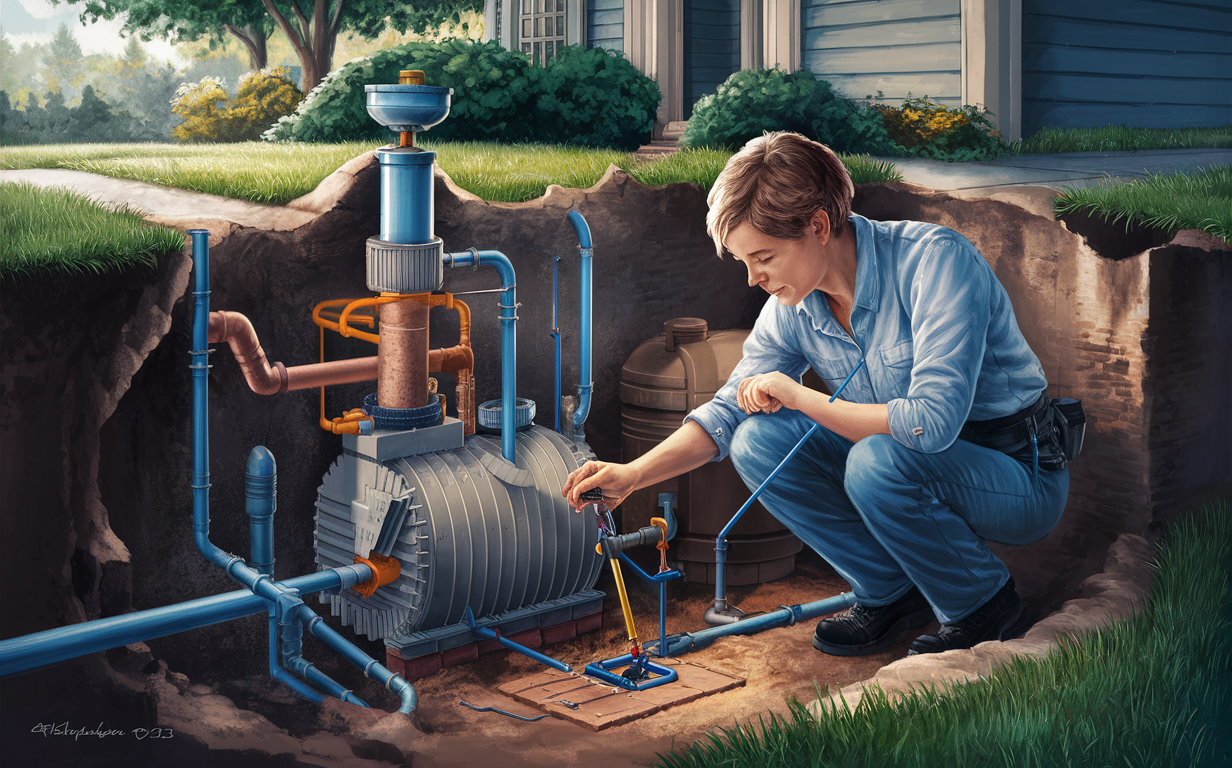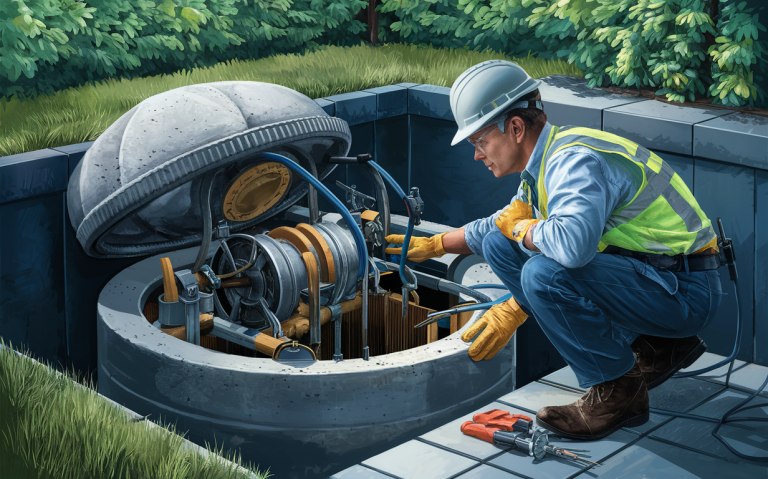Septic System Troubleshooting Guide: Expert Solutions for Common Problems
A comprehensive Septic System Troubleshooting Guide is essential for every homeowner with an on-site wastewater system. Understanding proper septic tank troubleshooting can save you thousands in repairs, whether you’re experiencing issues or want to prevent future problems.
Key Takeaways
- Systematic diagnosis helps identify specific septic tank troubleshooting problems
- Professional tools and methods ensure accurate troubleshooting of septic systems
Table of Contents
Understanding the Basics of Septic System Troubleshooting Guide
A septic system is an underground wastewater treatment structure commonly used in areas without centralized sewer systems. It combines nature and technology to treat household wastewater from plumbing produced by bathrooms, kitchen drains, and laundry.
Understanding proper septic system troubleshooting begins with knowing how your system works. This knowledge forms the foundation for identifying and resolving issues before they become major problems.
Components of a Septic System
- Septic Tank: This watertight container made of concrete, fiberglass, or polyethylene, holds wastewater and allows solids to settle down.
- Drainfield: A shallow, covered excavation made in unsaturated soil. It receives, treats, and disperses clarified wastewater from the septic tank.
- Soil: Soil filters and naturally treats the wastewater as it percolates through it.
Common Issues: Septic System Troubleshooting and Diagnosis

Before diving into specific problems, follow these basic troubleshooting septic systems steps:
- Document symptoms – Note when issues occur and under what conditions
- Check usage patterns – Review recent changes in water usage or household size
- Inspect visible components – Look for obvious signs of damage or malfunction
- Monitor water levels – Check for unusual changes in tank water levels
- Review maintenance history – Verify when the system was last serviced
Slow Drains and Backups
Slow drains are often the first sign of septic system problems. If you notice water pooling in sinks or bathtubs taking longer to drain, your system might be clogged.
Diagnosis:
- Check for blockages in the pipes leading to the septic tank.
- Inspect the septic tank for high sludge levels.
- Examine the drain field for signs of failure, such as standing water.
Unpleasant Odors
Foul odors, particularly around the septic tank or drainfield, indicate that something is wrong.
Diagnosis:
- Inspect the tank for leaks or cracks.
- Check the ventilation system for blockages.
- Look for saturated soil in the drainfield area.
Gurgling Sounds in the Plumbing
It could be a sign of septic trouble if you hear gurgling sounds when flushing toilets or running sinks.
Diagnosis:
- Inspect the vent stack for blockages.
- Check the septic tank for high water levels.
- Examine the drain field for proper drainage.
Lush, Green Grass Over Drainfield
While green grass might seem appealing, it can indicate that wastewater is surfacing, which is a sign of a failing drain field.
Diagnosis:
- Probe the soil in the drain field for excess moisture.
- Check for puddles or standing water that doesn’t drain away.
High Levels of Coliform or Nitrates in Well Water
Contamination of well water can be a grave indicator that your septic system is failing.
Diagnosis:
- Test well water regularly.
- Inspect the septic system for leaks.
- Ensure proper placement of the system relative to the well.
Maintenance Tips to Prevent Septic Issues

Regular Inspections
Regular inspections by a professional can identify issues before they become significant problems.
Pumping the Septic Tank
Depending on usage and tank size, septic tanks should be pumped every 3-5 years.
Avoiding Harmful Chemicals
Avoid flushing harmful chemicals, as they can disrupt the bacterial balance in the tank.
Water Conservation
Conserve water to reduce the load on your septic system. Fix leaks and install water-saving fixtures.
Proper Waste Disposal
Dispose of waste properly. Do not flush non-biodegradable items, grease, or food scraps.
Landscaping
Ensure proper landscaping around the drain field to prevent roots from infiltrating and damaging the system.
Common Signs and Their Likely Causes
| Sign | Likely Cause |
|---|---|
| Slow drains | Clogged pipes, high sludge levels |
| Unpleasant odors | Leaks, ventilation blockages |
| Gurgling sounds | Blocked vent stack, high water levels |
| Lush, green grass | Surfacing wastewater, failing drainfield |
| Water contamination | Leaks, improper system placement |
Advanced Troubleshooting Techniques

Professional septic tank troubleshooting often involves specialized equipment and methods:
Flow testing – Measures system capacity and identifies blockages
Pressure testing – Locates leaks in pipes and tank connections
Electronic monitoring – Tracks system performance over time
Bacterial analysis – Ensures proper biological function
Video Inspections
Using video cameras to inspect the pipes and septic tank can pinpoint specific issues like cracks or blockages.
Soil Testing
Testing the soil in the drain-field area can reveal problems with absorption and identify areas with high moisture content.
Hydraulic Load Testing
This test involves adding water to the system to see if it can handle the load without backing up, helping diagnose the capacity of the drain field.
Biological Additives
Adding biological additives can help maintain the bacterial balance in the septic tank, promoting the efficient breakdown of waste.
Monitoring Effluent Levels
Regularly monitoring the effluent levels in the septic tank can help determine whether the system is functioning correctly or needs pumping.
Data-Driven Septic System Management
Using data-driven methods to manage and monitor your septic system can provide early warnings of potential issues. This includes using sensors to track water levels and flow rates.
Maintenance Schedule for Septic Systems
| Task | Frequency |
|---|---|
| Septic tank inspection | Annually |
| Septic tank pumping | Every 3-5 years |
| Water usage audit | Annually |
| Well water testing | Annually |
| Soil testing in drainfield | Every 3 years |
| Adding biological additives | Soil testing in Drainfield |
How Texway Wastewater Services Can Help
At Texway Wastewater Services, we specialize in diagnosing and troubleshooting septic system issues. Our experienced team uses state-of-the-art equipment, including video inspection tools, to identify and resolve problems efficiently.
Signs You Need Professional Help
- Persistent slow drains despite DIY efforts.
- Recurring bad odors around the property.
- Gurgling sounds in your plumbing system.
- Standing water or lush grass over the drain field.
- Contaminated well water.
Key Points to Remember

- Regular maintenance is key to preventing septic system issues.
- Early diagnosis can save you from costly repairs.
- Professional inspections are critical for complex problems.
- Proper waste disposal and water conservation are essential for system longevity.
For expert septic system troubleshooting and diagnosis, contact Texway Wastewater Services at (817) 889-4007 or visit our website to schedule a service. We are committed to ensuring your septic system functions efficiently and lasts for years to come.







 Texway Wastewater Services is a septic, wastewater, and excavation company based out of Burleson, Texas and serving the surrounding areas. We specialize in
Texway Wastewater Services is a septic, wastewater, and excavation company based out of Burleson, Texas and serving the surrounding areas. We specialize in